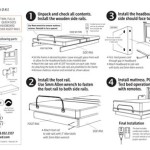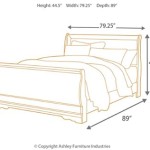How To Wash A Protect Bed Mattress Cover
Maintaining a clean and hygienic sleep environment is essential for a good night's rest. A mattress cover serves as a barrier against dust, moisture, and allergens, protecting your mattress from wear and tear. Regular washing is crucial for preserving the quality and effectiveness of the mattress cover. Understanding the right washing techniques is a key aspect of mattress cover maintenance.
This article delves into the essential aspects of washing a protective bed mattress cover, providing step-by-step instructions, and highlighting important considerations. By following these guidelines, you can ensure the optimal performance and longevity of your mattress cover, contributing to a more comfortable and healthier sleep experience.
1. Understanding the Care Label
Before washing any fabric, it is essential to refer to the care label. The label provides specific instructions regarding the appropriate washing method, water temperature, and drying settings for the particular mattress cover. Neglecting these instructions can lead to damage or shrinkage.
Care labels typically include symbols that indicate:
- Machine or hand washing
- Recommended water temperature
- Drying method (tumble dry, line dry, or do not tumble dry)
- Bleaching instructions
- Ironing instructions
2. Choosing the Right Detergent
When selecting a detergent for your mattress cover, opt for a mild, fragrance-free option. Harsh detergents containing bleach or fabric softeners can damage the fabric or reduce its absorbency. It is advisable to use a detergent specifically designed for delicate fabrics or bedding.
3. Selecting the Appropriate Wash Cycle
Most mattress covers can withstand machine washing. However, it is essential to choose a gentle cycle with cold water to avoid damaging the fabric. Avoid using hot water, as it can cause shrinkage or color fading. If hand washing is recommended on the care label, use cold water and gently agitate the mattress cover.
4. Drying the Mattress Cover
Follow the drying instructions on the care label carefully. Some mattress covers can be tumble dried on a low heat setting, while others must be line dried or air-dried. Excessive heat can damage the fabric or cause shrinkage. If tumble drying, use a low heat setting and remove the mattress cover promptly when dry to prevent wrinkles.
5. Caring for Waterproof Mattress Covers
Waterproof mattress covers require special care to maintain their protective properties. Avoid using bleach or fabric softeners, as they can damage the waterproof coating. Instead, use a mild detergent and follow the washing and drying instructions on the care label. Do not iron waterproof mattress covers, as heat can compromise their waterproofing ability.

How Frequently Should You Wash Your Mattress Protector

How To Clean Mattress Toppers The Right Way Puffy Blog

Allerzip Smooth Mattress Encasement Protect A Bed

Copper Mattress Protector Protect A Bed

Protect A Bed Cooling Mattress Pad Therm Sleep Snow Protector Review The Judge

Tencel Cloud Mattress Protector Protect A Bed

Protect A Bed Double Mattress Protector

Sealy Stain Protection Waterproof Crib Mattress Pad Baby

Oldham Chemical Company Protect A Bed Mattress Cover King

How To Get Stains Out Of A Mattress Cover
Related Posts







